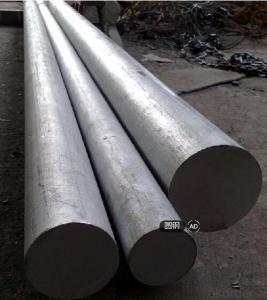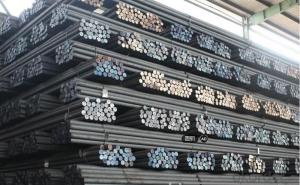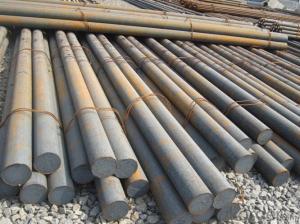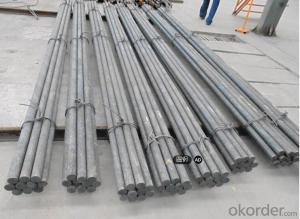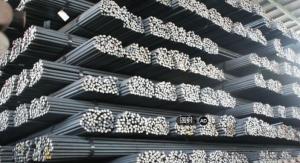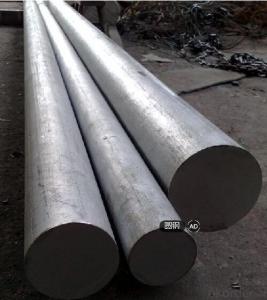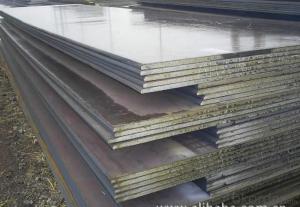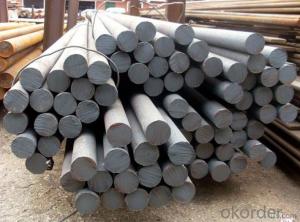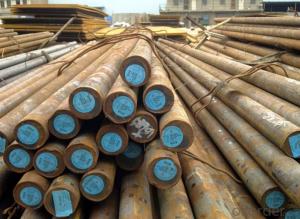Round Aluminum Bar Stock
Round Aluminum Bar Stock Related Searches
Led Light Bulbs For Ceiling Fixtures Led Lamps For Ceiling 42 In Ceiling Fan With Light Aluminum Coil Stock For Gutters Aluminum Foil For The Grill Hole Saw For Aluminum Plate Aluminum Tread Plate For Trailer Bow Plate For Aluminum Boat Aluminum Foil For Grow Room Aluminum Foil For Joint PainHot Searches
Stock Price For Aluminum Aluminum Coil Stock For Sale Aluminum Gutter Coil For Sale Used Aluminum Scaffolding For Sale 1/4 Aluminum Plate For Sale Aluminum Bar Stock For Sale Aluminum Round Stock For Sale Aluminum Diamond Plate For Sale Aluminum Scaffolding For Sale Craigslist 6061 Aluminum Plate For Sale Aluminum Dock Plate For Sale 7075 Aluminum Plate For Sale Aluminum Tread Plate For Sale Aluminum Checker Plate For Sale Aluminum Plate For Sale Near Me Plate Aluminum For Sale Aluminum Plate For Sale Aluminum Square Stock For Sale Aluminum Flat Stock For Sale Billet Aluminum Stock For SaleRound Aluminum Bar Stock Supplier & Manufacturer from China
Okorder.com is a professional Round Aluminum Bar Stock supplier & manufacturer, offers integrated one-stop services including real-time quoting and online cargo tracking. We are funded by CNBM Group, a Fortune 500 enterprise and the largest Round Aluminum Bar Stock firm in China.Hot Products
FAQ
- There are several different types of tool and die steel, including high-speed steel, cold work steel, hot work steel, and plastic mold steel.
- There are several non-destructive testing (NDT) methods that are commonly used for special steel. These methods are designed to detect flaws or defects in the steel without causing any damage to the material. One of the most widely used NDT methods for special steel is ultrasonic testing. This technique involves sending high-frequency sound waves through the steel and analyzing the echoes that are reflected back. By measuring the time it takes for the sound waves to travel through the steel and return, technicians can determine the thickness, density, and internal structure of the material. Ultrasonic testing is particularly effective at detecting cracks, voids, or inclusions in the steel. Another commonly used NDT method for special steel is magnetic particle testing. This technique involves applying a magnetic field to the surface of the steel and then coating it with a magnetic powder. Any defects or irregularities in the steel will create magnetic flux leakage, causing the magnetic particles to cluster and form visible indications. This method is particularly effective at detecting surface cracks or discontinuities in the steel. Liquid penetrant testing is another NDT method that is often used for special steel. This technique involves applying a liquid dye or fluorescent material to the surface of the steel. The dye penetrates any surface cracks or defects, and after a specified dwell time, excess dye is removed. A developer is then applied, which draws out the dye from any flaws, making them visible under UV light. This method is effective at detecting surface discontinuities and is commonly used in the aerospace and automotive industries. Radiographic testing is another NDT method that can be used for special steel. This technique involves exposing the steel to X-rays or gamma rays and capturing the resulting image on a film or digital detector. By analyzing the radiographic image, technicians can detect internal flaws such as cracks, voids, or inclusions in the steel. This method is particularly useful for thicker sections of steel or when access to the material is limited. In conclusion, non-destructive testing methods such as ultrasonic testing, magnetic particle testing, liquid penetrant testing, and radiographic testing are commonly used for special steel. These methods allow for the detection of flaws or defects in the steel without causing any damage to the material, ensuring its integrity and reliability.
- Special steel can have improved electrical conductivity through various methods. One common approach involves adding alloying elements like copper or silver, which increase the number of free electrons in the steel, thereby enhancing its electrical conductivity. Another option is subjecting the steel to heat treatment processes like annealing or normalizing. These heat treatments refine the steel's microstructure, reducing impurities and promoting electron movement. Surface treatments, such as electroplating or coating the steel with conductive materials like copper or nickel, also enhance its electrical conductivity. These treatments create a conductive layer on the steel's surface, facilitating better electron flow. Furthermore, refining the steel's grain size through techniques like grain boundary engineering or severe plastic deformation can improve its electrical conductivity. Smaller grain sizes enable more efficient electron movement and minimize scattering, resulting in improved conductivity. Lastly, proper cleaning and removal of surface contaminants or oxides significantly enhance the electrical conductivity of special steel. By eliminating impurities and ensuring a clean surface, the steel can establish better contact and conductivity. It is important to consider that the specific method chosen to improve the electrical conductivity of special steel depends on the intended application and the desired level of conductivity. Different industries and applications may require tailored approaches to achieve the desired outcomes.
- The performance of cutting tools is greatly enhanced by special steel, which possesses a variety of advantageous properties. To begin with, the utilization of special steel in the manufacturing of cutting tools offers remarkable hardness. This hardness enables the tool to endure high levels of stress and wear, ensuring that the cutting edge remains sharp for an extended period. As a result, cutting efficiency and precision are improved. Furthermore, special steel is renowned for its outstanding toughness and resistance to chipping and breaking. This characteristic is crucial in cutting tools as it allows them to withstand the powerful forces and vibrations generated during the cutting process. The toughness of special steel ensures that the tool can withstand these extreme conditions without compromising its performance or structural integrity. Moreover, special steel provides excellent resistance to heat and temperature stability. When engaged in cutting operations, the tool can generate substantial amounts of heat due to friction. Special steel's capacity to resist thermal deformation and maintain its hardness at high temperatures prevents the cutting edge from losing its effectiveness or becoming dull. Additionally, special steel can be customized to suit specific applications through alloying and heat treatment procedures. This adaptability allows manufacturers to optimize the steel's properties based on the intended use of the cutting tool, such as cutting different materials or operating in challenging environments. By tailoring the special steel, cutting tools can be designed to provide optimal performance, durability, and longevity. In conclusion, special steel significantly contributes to the performance of cutting tools by offering exceptional hardness, toughness, heat resistance, and customization options. These properties guarantee that cutting tools remain sharp, durable, and efficient, enabling them to achieve precise cuts and endure demanding cutting operations.
- There are several production methods for special steel, including electric arc furnace (EAF), basic oxygen furnace (BOF), and vacuum arc remelting (VAR). Each method has its own advantages and is used depending on the specific requirements of the steel being produced. EAF is commonly used for recycling scrap steel and allows for flexibility in alloy composition. BOF is more suitable for large-scale production and is known for its efficiency in removing impurities. VAR is a specialized method used to refine and purify steel, resulting in high-quality, homogeneous products.
- Die steel is used in metal stamping processes as it provides the necessary hardness, durability, and wear resistance required to shape and form metal sheets or components. Die steel dies are used as molds or templates, which are pressed onto the metal to cut, bend, or shape it into the desired form. The high strength and toughness of die steel enable it to withstand the extreme pressures and repetitive impacts of the stamping process, ensuring precise and consistent results.
- Creep-resistant steel possesses high strength and resistance to deformation at elevated temperatures. It maintains its mechanical properties even under long-term exposure to high stress and high temperatures. Its ability to resist creep, or the gradual deformation under stress, makes it suitable for applications in power plants, boilers, and other high-temperature environments. Additionally, creep-resistant steel exhibits good resistance to corrosion and oxidation, ensuring its durability and longevity in harsh conditions.
- Working with special steel presents several unique challenges compared to working with regular steel. Here are some of the main challenges one may encounter when working with special steel: 1. High cost: Special steels often have higher production costs due to their unique composition and properties. The raw materials used in their production may be rare or require complex manufacturing processes, leading to increased costs. 2. Limited availability: Special steels are not as widely available as regular steels, making it more challenging to source them. This limited availability can lead to longer lead times and potentially higher costs when trying to procure the necessary materials. 3. Complexity in machining: Special steels can be difficult to machine due to their high hardness or toughness. Their unique properties may cause excessive tool wear, leading to increased machining time and costs. Specialized cutting tools and machining techniques may be required to overcome these challenges. 4. Heat treatment requirements: Special steels often require precise and specific heat treatment processes to achieve the desired mechanical properties. The complexity of heat treatment can be a challenge, as it requires careful control of temperature, time, and cooling rates. Improper heat treatment can lead to inconsistent material properties or even material failure. 5. Weldability issues: Some special steels may have poor weldability compared to regular steels. They may be prone to cracking or require preheating and post-weld heat treatment to ensure proper joint integrity. This can add complexity and cost to welding processes. 6. Corrosion resistance: While special steels may possess excellent mechanical properties, they can sometimes be more susceptible to corrosion compared to regular steels. This requires additional measures to protect the steel from corrosion, such as applying protective coatings or using corrosion-resistant alloys. 7. Knowledge and expertise: Working with special steels often demands a higher level of technical knowledge and expertise. The unique properties and characteristics of these materials require a deep understanding of their behavior and how to effectively work with them. This may require specialized training or collaboration with experts in the field. Despite these challenges, working with special steel can also offer various benefits, such as superior strength, durability, and performance in specific applications. By understanding and addressing these challenges, engineers and manufacturers can harness the unique properties of special steel to develop innovative and high-quality products.




































